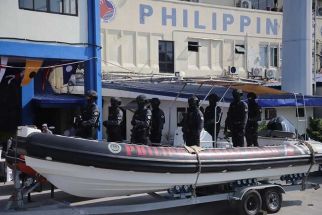Postcards from Sumilon
CEBU, Philippines — Sumilon is a low key small island towards the southeastern tip of the Cebu mainland. Despite its breathtaking views, the island is not as swarmed by tourists and, thus, is an ideal destination for a quiet time ‘away from it all’. Those who’ve been there attest that Sumilon Island is just ‘picture perfect’.
The island is widely regarded as one of the Philippines’ notable success stories in eco-conservation – a distinction which dates to the mid-1970s when it was declared the first marine protected area in the country. Now home to Bluewater Sumilon Island Resort, since 2005, the island has holistically been transformed into a resort getaway that champions the best practices of environment protection and eco-conservation.
Everywhere one looks in Sumilon, there is beauty to be found. The 24-hectare coral island derives its name from the local term “sumilon,” which loosely translates to “to take refuge.” The island has caves where the fishermen of old were to take refuge in during storms.
Sumilon’s famed white sand beach runs through the island’s north-facing side. Two of the island’s popular diving spots – the “Garden Eel Plaza” and “Julie’s Rock” – can be seen from this seemingly endless stretch.
At the southwestern side of the island is Sumilon’s famous white shifting sandbar. The “shifting sandbar” is termed as such because its shape changes with the seasonal ebbs of its tides.
The island’s inland lagoon teems with lush mangroves. More than a verdigris complement to the island’s aquamarine shores, the mangroves grow in tandem with the island’s coral reefs.
The “balwarte” (watchtower) and lighthouse on the island’s eastern points are such nostalgic attractions. The construction of the two-storey watchtower is said to have been overseen by the famous soldier-priest Fr. Julian Bermejo, who served as the parish priest of mainland Cebu’s Boljoon town in 1802 (Fr. Bermejo also intermittently served as the parish priest of the towns Argao, Dalaguete and Oslob).
Sumilon’s “balwarte” is part of a series of watchtowers that lined the Cebu mainland’s coastal towns during the Spanish period. These functioned as a warning system against incoming raiders and marauders.
The tiny island’s main appeal may be its white sand beaches and diving spots, but there’s actually more to Sumilon. There are amazing sights to take away one’s breath while taking on the island’s hiking trails. These are such treasures to behold.
The Bluwater Sumilon Island Resort rate the trails as “easy” (770 meters), “moderate” (953 meters) and “advanced” (1.7 km).
Sumilon Island It takes roughly around 15 minutes pumpboat ride from the port at Barangay Bancogon in Oslob town, mainland Cebu. Oslob is roughly a three-hour drive to the southeast from Cebu City.
- Latest































